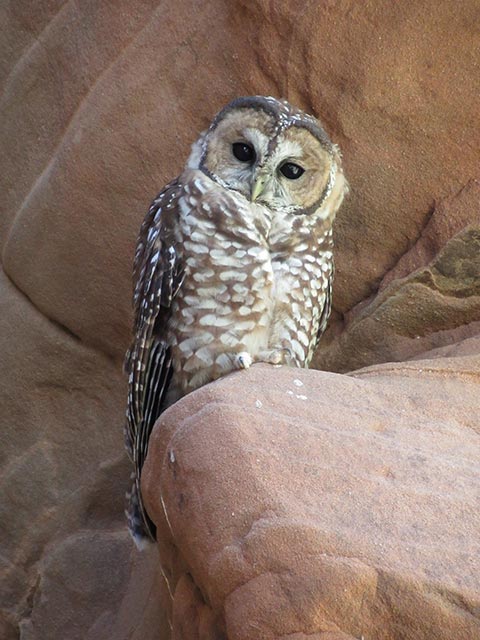From Wildlife.org
Massive wildfires are harmful to the birds, but low-severity fires benefit their habitats
Massive wildfires are harmful to Mexican spotted owls, but frequent, low-severity fires benefit them, researchers found. The finding suggests that returning the historical fire regime to the landscape can benefit the owls while reducing the risk of catastrophic fires.
“We have very little hard data showing us how Mexican spotted owls respond to fire, which is a need-to-know piece of information for managers in the Southwest,” said Gavin Jones, a research ecologist with the Forest Service Rocky Mountain Research Station and the lead author of the study published in Fire Ecology.
The Mexican spotted owl (Strix occidentalis lucida) is a threatened species that inhabits forests and canyonlands in the southwestern United States. These owls often live in forests that are at high risk of stand-replacing fire. Yet conservationists have been concerned that efforts to reduce wildlife risk—like thinning or prescribed fire—could alter the forest characteristics the owls depend on for their survival.
Jones and his co-authors collected and analyzed eight years of monitoring data from Mexican spotted owl breeding pairs. They found owl pairs occupied sites at higher rates when these sites experienced more frequent fires in the previous three decades.
In contrast, they found owl pairs persisted at lower rates at sites that experienced more extensive, high-severity fire.
The research suggests that management activities intended to reduce megafire risk—like prescribed burning and mechanical thinning— will likely promote both Mexican spotted owl conservation and more resilient forest landscapes.
“Mexican spotted owls appear to be well-adapted to historical frequent-fire regimes,” Jones said. “If we can get that type of fire back on the landscape, it should bode well for the species and its recovery.”


